 May, 24th, 2018
May, 24th, 2018
Robert Slomp, Robert.slomp@rws.nl
Marcel Bottema,
Introduction
In the newsletter we have given an abstract of the relevant research for Flood Defenses. The present overview covers the research in somewhat more detail. First some general principles are highlighted:
- Flood-defense research is polydisciplinary, including several scientific disciplines relating to various loads and strength aspects of flood defenses, as well as probabilistics and statistics and governance.
- Most of the applied research on flood-defense related topics consists of contract research, which is commissioned by the government, and carried out at research institutes like for example Deltares. Besides this, some research is carried out by consultancies.
- Fundamental research is mainly carried out at universities, especially those of Delft, Wageningen, Utrecht and Twente. There are three main funding sources: the universities themselves, the National Research Council (NWO), and funding by third parties. NWO-funded research is increasingly linked to the National Research Agenda of NWO, and to the research theme ‘Water’ of NWO. Third parties can include the EU.
- Research is more and more linked to research agenda’s. Besides the National Research Agenda of NWO, there is also a National Knowledge agenda on Water and Climate (NKWK), which combines various agendas of the Ministry of Infrastructure and Water Management, of Rijkswaterstaat, of Water Boards and their Foundation for Applied Water Research (STOWA), the national Levee Reinforcement Program HWBP, as well as various consultancies and research institutes and universities.
- The flood risk management policy in the Netherland is covered by the following document
https://www.enwinfo.nl/images/pdf/Grondslagen/GrondslagenEN-lowresspread3-v.3.pdf
- Information on the current flood defense assessment and design tools can be found here.
https://www.helpdeskwater.nl/publish/pages/132671/24_04_2016_implementing_risk_based_flood_defence_standards.pdf
https://www.helpdeskwater.nl/publish/pages/132671/20160423_probabilistic_flood_defence_assessment_tools.pdf
https://www.helpdeskwater.nl/publish/pages/132671/2017_07_16_calibration_report.pdf
The itemized list below highlights some key research activities of The Netherlands on Flood Defenses, even though it is not necessarily complete. The scope is limited to levee-related issues, which implies that research on hydraulic structures is not mentioned.
- Research at universities, with some participation/contribution of Rijkswaterstaat
- SafeLevee project (lead partner university of Delft
International Levee Performance Database (http://leveefailures.tudelft.nl) to facilitate sharing of data on breach formation and breach initiation, to facilitate three work packages with the following objectives
- to analyze data of levee performance and failure at a macro-scale, to identify system failure patterns and its most important causal factors (e.g. type and shape of a levee, etc.). This requires an innovative combination of techniques and data sources from hydraulic and geotechnical engineering and remote sensing.
- to a) improve our understanding of the physical processes involved in levee failures; b) improve and/or develop computational models that can be used in safety assessment and design of levees. The focus will thereby be on geotechnical failure mechanisms.
- to develop more accurate models and theories of breach initiation and formation using available datasets for calibration and validation
- link
https://www.tudelft.nl/citg/over-faculteit/afdelingen/hydraulic-engineering/sections/hydraulic-structures-and-flood-risk/research/safelevee-project/
- Flood Risk – All Risk project, lead partner is the university of Delft, other partners are the universities of Utrecht, Wageningen, Twente, Nijmegen, Houston, Tokyo and Berlin
- Aim if to facilitate implementation of new risk standards in the flood protection program
- The ambition is also to reduce flood risk by a factor 10 in some parts of the Netherlands. Improving the reliability of flood defenses is the main objective. Understanding failure modes is an essential element of this study.
- This study has just started.
http://www.taskforcedeltatechnologie.nl/wp-content/uploads/2017/05/Presentation-AllRisk_Taskforce.pdf
See also: https://ncr-web.org/projects/all-risk/
- Coastal Genesis/Coastal Systems,” Kust Genese”, lead partner Rijkswaterstaat
- The Netherlands carries out a lot of beach nourishments to reduce flood risk and for recreation. Understanding the effects of these nourishments is essential.
- The project has a number of work packages
- Long term trends in coastal developments. Exchange of sand between barrier islands.
- A pilot nourishment on a barrier island (Ameland) to monitor the exchange of sand with the wadden sea area behind the islands.
- Ecology, effect of the nourishment on the ecology
It wants to be flexible and adaptive program. A lot of data is being generated from the monitoring, making this available for researchers essential.publications are on the website: https://waterenklimaat.nl/research-tracks/coastal-genesis/?lang=en
Kust Genese is part of the Interreg project Building with Nature http://www.northsearegion.eu/building-with-nature
- River Care, lead partner university of Twente
- The main goal is to understand processes in the river. Some of these processes e.g. long term morphology are linked to flood risk management and changes in the hydraulic boundary conditions (on the water levels)
- To improve the fundamental understanding of the behaviour of rivers, and to map the consequences of the measures for hydraulics, morphology and ecology and to improve the current models. The data, knowledge and models will be used to improve the design and maintenance of measures and cut costs of river management.
- publications are on the website
- See also: https://ncr-web.org/projects/rivercare/
- Applied contract research on the national level
2.1 Hydraulic Boundary Conditions
Research commissioned by Rijkswaterstaat(the national water authority) with the meteorological office KNMI and Deltares being the main research institutes involved
2.1.1 Research on the wind climate on the North Sea and in the Netherlands,
- A better set-up of hydraulic boundary conditions (water levels and waves) for design and assessment on the coast, lakes and estuaries, reducing statistical extrapolation errors, and including more information on physics and physical maxima in extreme event estimates.
- There are three main research subjects
- to determine the statistics for extreme wind speeds and wind events
- to determine whether or not a two-way coupling between wind models and hydraulic models (in particular wave models) is necessary
- Establish a dataset with 50 000 years of climate data above the North Sea area for calculation of storm surges, precipitation, extreme discharges and the correlations between the rivers, the rivers and the sea, for the current and for a future climate. We currently have 6500 years.
- This is a long term project, with deliverables every year
- All documentation will be published in English on the KNMI website, seehttps://www.knmi.nl/research/weather-climate-models/publications#
2.1.2 Research on sea level scenario’s which influence the North Sea Area
- There is currently a methodological mismatch between the probabilistic approach for design and safety assessment of flood defenses, and the qualitative scenario approach for climate and sea level rise. The aim of the research is to move towards probabilistic climate projections that are more suitable for risk-based designs.
- Ice melt on Antarctica influences the sea levels more than the melt on Greenland. We have to know if our long term scenario’s for the year 2100 and onwards have to be changed.
- This is a long term project, with deliverables every year
- All documentation will be published on the KNMI website in English.
2.1.3 Research on discharge scenario’s for the Rhine, Meuse and its tributaries, The GRADE project. A resampling technique (GRADE) of rainfall data to construct large artificial time series, e.g. 50 000 years.
- A better set op hydraulic boundary conditions (water levels and waves) for assessment and design on the rivers and estuaries.
- There are two main objectives
- an update of climate change scenario’s for the Rhine and Meuse river discharges
- information for the tributaries for the Rhine branches and the Meuse (e.g. the Vecht river)
- In the long run, the aforementioned 50000 years of climate data could be used to validate the GRADE resampling approach.
This is a long term project, with deliverables every year
All documentation will be published n English, on the KNMI (see above), the Rijkswaterstaat and Deltares websites.
2.1.4 Research on wave action on rivers
- A better set-up of hydraulic boundary conditions (water levels and waves) for assessment and design on the rivers and narrow estuaries.
- There are two main objectives
- Feasibility study, to check whether the spectral model is a suitable tool to replace the current approach based on the Bretschneider parametric formulas.
- measuring wind waves and currents on rivers, measuring the interaction between river flow and the wave action, in order to validate SWAN and Bretschneider and provide suitable model bias corrections.
- This is a long term project, with deliverables every year
- In 2018 the best method to measure wind waves will be determined.
- All documentation will be published in English, on the KNMI, the Rijkswaterstaat and Deltares websites.
2.1.5 Wind, Wave and Run-up measurements on large lakes, between barrier islands in the Waddenzee
- These activities are crucial for validation of hydraulic (wave) models, and to provide uncertainty bands and bias corrections. They supplement the permanent water level measurements of the RWS national monitoring network.
- There are three main objectives
- measuring wind and wind-generated waves in the Wadden Sea (tidal inlets and tidal flats) and on large lakes like Lake IJssel. This project started in 1997 for lakes and in 2006 for coastal areas.
- using this data to calibrate and validate our wind and wave models
- combining this data with run-up data on two locations in the Wadden sea area
(the last project is formally more a project of TU delft, Rijkswaterstaat is involved in the measurement strategy.
- This is a long term permanent project, with deliverables 5 or up to 10 years, after the data has been processed and evaluated.
- In 2018 the best method to measure wave action will be determined.
- The run-up study will start in 2018
- All documentation will be published in English, on the Rijkswaterstaat and TU websites. Most of the data can be accessed through rws.nl/water.
2.2 Research of Geotechnics
Piping (internal erosion) and slope instability
- A more precise description of the failure mechanism of piping so design and assessment of flood defenses is less conservative. This should include (three-dimensional) heterogeneity effects and time-dependence.
- The Sellmeijer model currently describes the capacity of sand transport in the pipe. We should try to describe the rate in which the particles are loosened from the soil or we should return to empiric rules (e.g. Bligh and Lane).
- Slope instability research will also continue, with a focus on facilitating the recent implementation of the Critical State Soil Model CSSM (also known as undrained approach).
- Further slope-instability related research topics are related to pore pressure and infiltration modelling, the strength of the unsaturated zone, and the effect of wave overtopping on slope instability
These are long term projects, with deliverables every year. All documentation will be published on the Rijkswaterstaat and Deltares website in English.
2.3 Revetment failure
- A more precise description of the failure mechanism of revetment failure (stone, asphalt and grass) including the subsoil, and a better description of time-dependent effects. This should lead to a less conservative method for design and assessment of flood defenses…
- This is a long term project, with deliverables every year. It will start in 2019.
- All documentation will be published on the Rijkswaterstaat and Deltares website in English
2.4 Failure path research
- Little is known about the levee failure process beyond initial failure of for example a revetment (i.e. beyond the first asphalt crack, or first uplifted stone or grass sod). This is still far from the ultimate limit state and actual levee failure to be considered in the safety assessment.
- The failure path approach is inspired on the USACE safety assessment approach and can be used to estimate (using expert judgement) the contribution of this residual strength between initial and total levee failure. It can also be used to identify and prioritize knowledge gaps, also on the interaction of different failure mechanisms
- Research is now being carried out to explore the potential of this approach.
3.0 Applied research initiated by STOWA, for regional flood defenses
Research for regional flood defenses have little or no risk for life loss. There are about 15000 km of regional flood defenses in the Netherlands, mainly managed by regional Water Boards. STOWA is the research institute for the regional managers of flood defenses in the Netherlands.
- Managing flood defenses poses a lot of practical problems
- Research subjects cover inspection and management of levees, including how to deal with trees, animal burrowing, setting of safety standards, providing safety assessment methods, dealing with drought and peat levees, etc.
Projects with the Delta program: e.g. multifunctional use of levees, professionalizing inspection of flood defenses,
- for publications see the website (note most are in Dutch).
- http://www.stowa.nl/projecten/?projectTask=2. Research subjects in Dutch
4.0 Applied research initiated by the national program for the reinforcement of flood defenses “HWBP”.
Some projects of interest are listed below.
4.1 Influence of sandy and vegetated foreshores on Hydraulic Boundary conditions,
- Wave damping by tidal marsh vegetation has been investigated within the NOW BE SAFE project, and will continue to be investigated within the ALL-RISK project described above. See for example DOI 10.1016/j.coastaleng.2016.06.001
- The present 2-year project is about the application of these results to design of Wadden Sea levees, and will finish soon.
- Despite all efforts and all new insights, there is still a lack of empirical data in extreme conditions, so that uncertainties when accounting for tidal marsh wave damping are large.
- Pilot experiments have also been done on sandy foreshore solutions (in order to reduce the amount of levee reinforcement), for example near the Houtribdijk separating Lake Marken and Lake IJssel. See https://www.ecoshape.org/en/projects/hybrid-flood-defence-houtribdijk-sandy-foreshore/
4.2 a review of the method for calculating Hydraulic Boundary conditions
- a review of the current way hydraulic boundary conditions are calculated in the Wadden Sea area and suggestions for improvements for design, assessment and forecasting.
- A reduction of hydraulic boundary conditions to be used in current dike design.
- This is a two-year project which started in 2017, with deliverables in 2018 and 2019
- All documentation will be published on the Rijkswaterstaat and Deltares website in Dutch,
4.3 Piping / internal erosion
- research on the piping process and experiments with drainage systems (large sand filters) to reduce piping
- finding affordable measures to tackle piping
- This is a long term project which started a few years ago and deliverables in 2018 and 2019
- All documentation will be published on the Rijkswaterstaat and Deltares website in Dutch,
4.4 Slope stability
Real life experiments with and without reinforcement using sheet piling
– see the article by Meindert Van, in the mid-2018 Newsletter
4.5 stone revetments
- A more precise description of the failure mechanism for certain type of stone revetments used in the Wadden sea so design and assessment of flood defenses is possible.
- The objective is to determine a new rule and to implemented it in the current safety assessment software.
- This is a long term project, with deliverables at the end of the project in 2019
- All documentation will be published on the HWBP website in Dutch
4.6 Asphalt revetments
Many asphalt revetments were constructed in the seventies and are approaching the end of their technical lifetime.
- A more precise description of the ageing of asphalt revetment used in the Wadden Sea
- The objective is to determine when to intervene.
- This is a long term project, with deliverables at the end of the project in 2019
- All documentation will be published on the HWBP website in Dutch
Research funded by HWBP, the national reinforcement program
4.7 Managing cables, pipelines crossing levees or near levees A failure of pipeline in or near a levee can cause failure of the levee.Safety assessment rules for cables and especially pipelines near and within levees need a risk-based update.
- Managing cables and pipelines near an crossing levees is covered by formal rules. With the implementation of risk based standards for flood defenses some levees now have lower standards. The NEN standards have become more important for those levees.
- This project just started in 2018
- rules covering cables and pipelines are published by NEN: https://www.nen.nl/. The HWBP website will publish the results, probably only in Dutch.









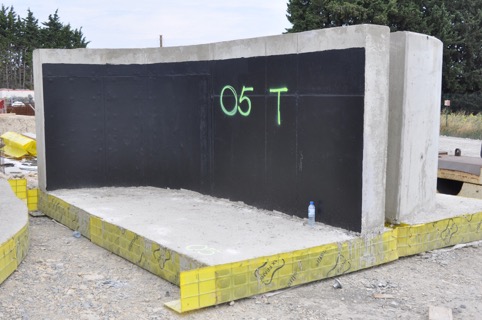
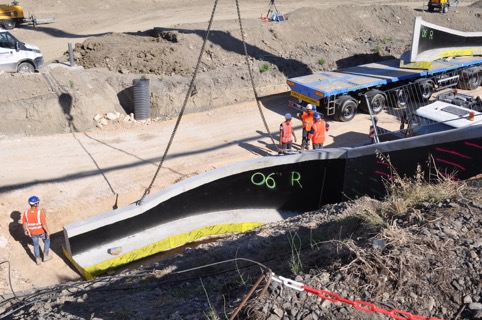
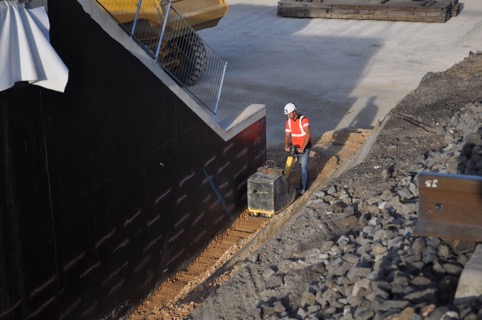






 Attention – 1 week left to end of abstract submission
Attention – 1 week left to end of abstract submission

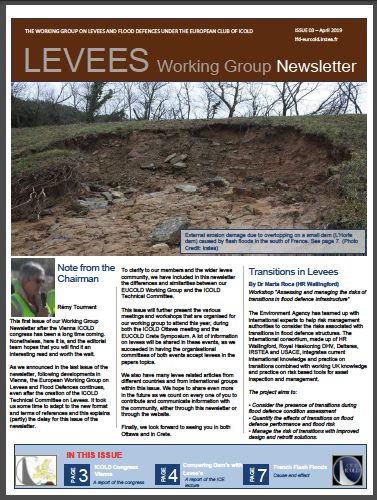


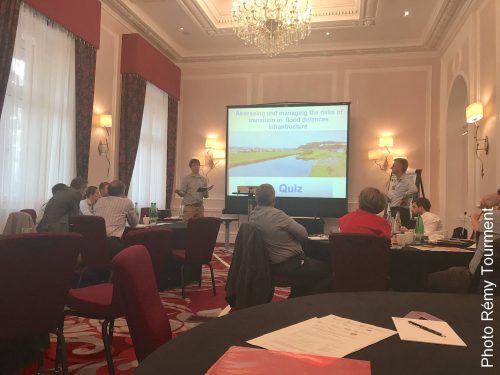
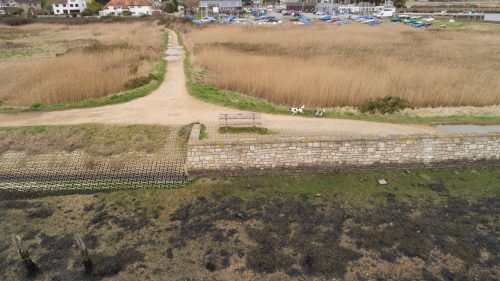
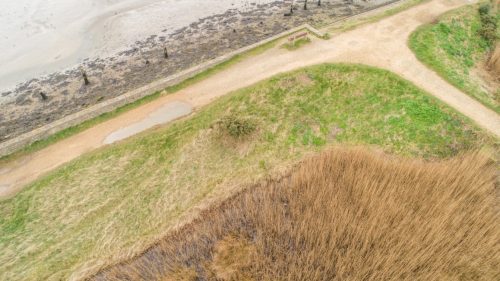
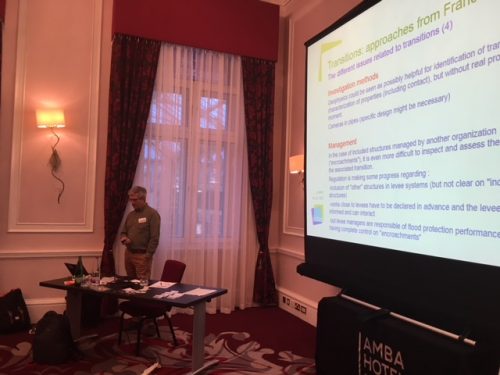 Photo OwenTarrant
Photo OwenTarrant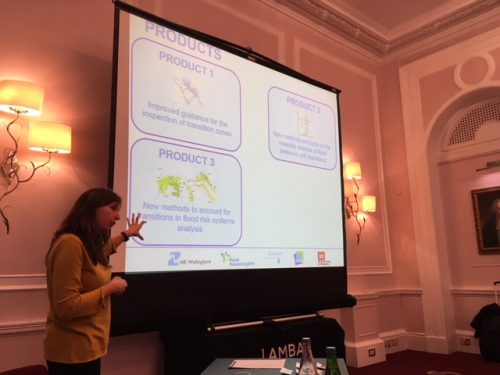 Photo Owen Tarrant
Photo Owen Tarrant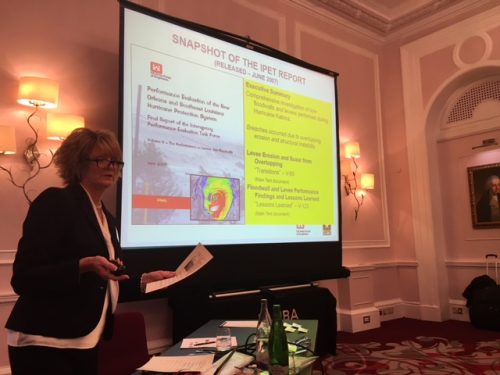 Photo Owen Tarrant
Photo Owen Tarrant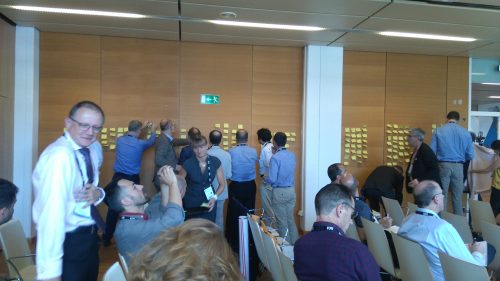
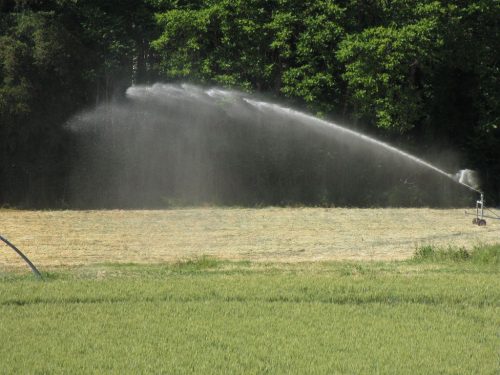
 May, 24th, 2018
May, 24th, 2018
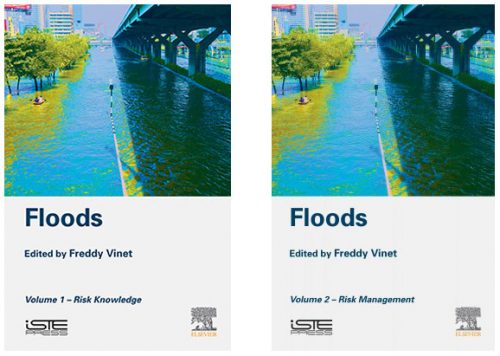
 Don’t hesitate to disseminate it to all your contacts (inside and outside of ICOLD) who are interested in levees and flood defences.
Don’t hesitate to disseminate it to all your contacts (inside and outside of ICOLD) who are interested in levees and flood defences.
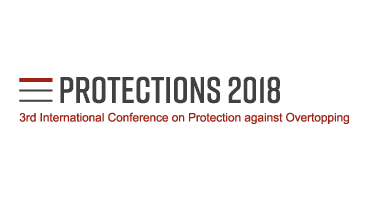
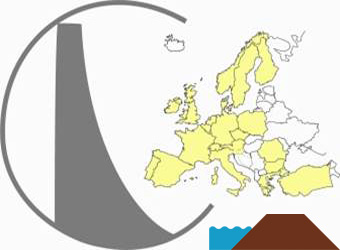
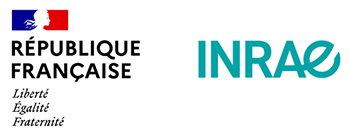
Recent Comments